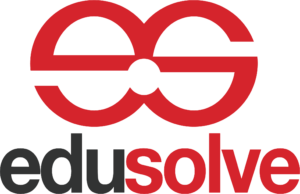MTSS, Fulfilling the Promise of Personalized Learning
Cambridge Public Schools, Cambridge, MA
MTSS fidelity of interventions is up, way up! How do we know? We see it in the data. EduSolve customized a propensity matching intervention approach and observation tool so leaders can see, review, and continuously improve. Climate and culture gains are real and sustainable in student motivation, community building and cooperation.
Optimizing Special Education Services in Henrietta, NY
The Rush-Henrietta Central School District, recognized for its commitment to inclusive education, sought to optimize its special education services to better meet the needs of its diverse student population. The EduSolve team was brought in to help restructure the district’s approach by validating successes, identifying improvement areas, and streamlining resources and investments. The district faced several challenges, including inefficiencies in resource allocation, variability in program effectiveness, and a growing need to align special education practices with best practices nationally.
The project team conducted a comparative analysis between the district’s current practices and those of high-performing special education programs nationwide. The team analyzed student performance data and program costs to pinpoint areas for financial and educational optimization. The evaluated of existing state of special education services, focusing on assessment practices and response to intervention processes supported the design of restructured staffing models to optimize staff levels and qualifications, reducing reliance on outsourced services.
The project led to significant improvements across the district’s special education services:
- Enhanced Resource Efficiency: Optimized use of resources led to cost savings and better allocation of staff and space.
- Improved Program Effectiveness: Alignment with national best practices and local needs significantly enhanced the quality of services provided to special education students.
- Increased Staff Capacity: Revamped training and development programs empowered the existing staff, reducing the dependency on external providers.
The project team successfully restructured the special education services, demonstrating the impact of a methodical, data-driven approach on enhancing educational outcomes for students with special needs. This case study highlights the importance of adaptive strategies in special education to ensure that all students receive the support they need to succeed.
3 resources to consider when testing new approaches to out of school time
Many of us were lucky to witness another solar eclipse in April (wearing protective eyewear of course)! The ‘time horizon’ theme for superintendents and cabinet leaders, offers strategic moves as the school year draws to a close.
As one year comes to a close, another opening is on the horizon. School leaders should be thinking about summer as an eclipse of sorts. Summer bridge programs are winding up and offer invaluable opportunities for high-quality out of school time (OST) learning and enrichment. Yes, summer learning is a great way to combat summer slide and make good use of final ESSER funds, but OST is so much more than just high-dosage tutoring. It’s an excellent way to test approaches to doing school and learn what works best for our communities. Think of OST as a design space or a learning lab where engagement, experiences, and open access programs are tested and understood for import into the “standardized academic year.”
We often refer to systems, culture, instruction and people as we think about strategic work. In terms of systems, OST offers a light-weight venue, with low accountability stakes to improve school. Many school systems re-opened schools in a race to get back to ‘normal’. Normal worked for many, but it isn’t working for all. Plummeting attendance and enrollment rates are evidence that we need to reimagine school. Reimagining our systems for ‘doing school’ doesn’t have to be radical, it can be tested through OST as a staging area for needed changes in the traditional school year.
It’s also a powerful culture piece to signal that we learn all year round. In other words, the school year is ending, but a new one is just beginning and the onramp is through expanded summer learning. The agrarian-based calendars of the past don’t work for us anymore. Learning is an all day every day activity. Superintendents can send a powerful message by visiting these sites and engaging with parents. OST is the best place to meet families because it’s less structured than a bell-to-bell day.
Instruction gets a boost in OST too. Needless to say, summer offers time for support and remediation, but it also makes room for enrichment that makes students want to be on our campuses. Elementary schools can organize important career exploration experiences, having guest speakers from local businesses come and share their world of work. Middle schools can arrange for summer project-based learning where they are solving real-world community issues and challenges. High Schools are an excellent place to host rising 9th grade sessions that connect incoming freshmen to CTE and other career experiences in the field, acting as an internship brokerage house.
On careers, people management gets a boost in OST when we start new teachers during the summer so they can gain practical experiences prior to the big start in the fall. Long-term subs and paras can also test out new skills and benefit from job-embedded training to get talent teams ready for a new school year.
Here are some resources to consider when testing fresh approaches in OST:
- Onboarding new teachers in OST provides a lower-stress alternative to the rush of formal school starts. TNTP offers this guide that reminds us of the value of getting a jump start on relationships, warming novice teachers up for the new year.
- The Wallace Foundation offers a free online OST Cost Calculator that works like a mortgage calculator. It lets you determine the costs of a variety of options for high-quality afterschool programs and the summer portions of year-round programs.
- Measuring OST Data for impact is easier than you might think. OST is free of standardized testing and many state requirements, so it’s ofter overlooked as a viable space for data. Child Trends offers some key considerations on how the summer can be used to create and test much-needed technical assistance for the fall.
As you think about one year ending and another beginning, remember there are many dynamic possibilities that OST offers, it becomes clear that embracing this less structured, exploratory period is not merely a stopgap or a remedy for the “summer slide,” but a vital chapter in the evolving narrative of education. Superintendents and school leaders are provided with a unique laboratory for innovation during the summer months—where new ideas can be tested, and new approaches to learning can be integrated into the traditional school calendar.
This strategic deployment of OST not only bridges the gap between academic years but also redefines what it means to learn in a continuously evolving educational landscape. As this school year concludes, let us carry forward the spirit of innovation and collaboration that OST embodies, ensuring that every student has the opportunity to thrive in a system that learns and grows year-round.
Large Urban Culture Looks Good in Data and in Life, Fort Worth, TX
Fort Worth Independent School District (FWISD) is solving the need for culture and climate strategy on high-needs campuses. The new model is so successful it was featured at the International Social & Emotional Learning Exchange, 2023 and its Executive Sponsor, Dr. Cherie Washington, received a 2023 District Administrator Leadership Institute Annual Distinction Award. Working with EduSolve, the team used a collaborative developmental methodology and created a common delivery framework that establishes the foundation for equitable outcomes to meet the individual needs of each and every child.
The project began by organizing cross functional teams that represented academics, behavior/climate, schools, equity and inclusion, and technology solutions to catalyze their shared vision for MTSS and promotion of emotional health. As a team, we piloted a new practice guide with priority schools showing a high level of culture challenges. These schools are identified using a composite score of attendance, discipline, and academic performance outcomes. FWISD has reduced the number of these schools from 17 to 13 in the first six months of implementation.
Student Gains in Culture Equate to Gains in Academics, Norwalk, CT
Norwalk Public Schools understands that a teaching and learning culture should permeate every facet of a school district’s operations, extending from the superintendent’s office and academic core priorities to the individual classrooms. We customized a social and emotional development strategic plan, that is the unifying force that brings together district priorities, influencing central office staff, school leaders, teachers, students, and families alike.
Standards Development with the Office of the State Superintendent of Education (OSSE), Washington DC
OSSE’s strategic plan is clear: foster student and staff well being. We are building OSSE’s social and emotional learning standards as the underpinning to their future implementation plan. This is largely premised on EduSolve’s SCAN Analysis Report, commissioned by OSSE to organize community assets and honor the needs of youth across the City. Through this process, various collaborative efforts were conducted; including writing groups, focus groups, in-person and virtual feedback engagements, and a survey.
Boosting Social and Emotional Learning Impact in Hopkinton Public Schools Hopkinton, Massachusetts
Hopkinton Public Schools, with a diverse student population, recognized the need to enhance their Social Emotional Learning (SEL) initiatives to better meet students’ holistic developmental needs. The primary challenge was to integrate SEL more deeply into the academic framework to promote both emotional well-being and academic success. The district faced issues with inconsistent SEL practices across schools, insufficient training for staff, and a lack of alignment with the academic goals.
EduSolve conducted a comprehensive review of existing SEL programs, gathering data through assessments, surveys, and direct observations. Working with the district team, we identified gaps in SEL curriculum alignment and inconsistencies in program delivery which were impacting student engagement and wellness.
Our team of national SEL experts conducted walkthroughs in schools, engaging with teachers and administrators to understand on-ground realities and challenges. The team evaluated the current training programs for staff, identifying areas for enhancement to support effective SEL implementation.
The project team created a phased implementation plan, ensuring that recommendations align with the district’s strategic goals and are feasible within the operational constraints. Following the implementation of the recommended strategies, Hopkinton Public Schools observed significant improvements:
- Enhanced Student Engagement: A marked increase in student participation in both academic and extracurricular activities was noted.
- Improved Emotional Well-being: Students reported higher levels of emotional satisfaction and lower stress levels, as reflected in follow-up surveys.
- Staff Empowerment: Teachers and administrators felt more confident in their abilities to integrate SEL into their teaching practices effectively.
- Academic Performance: Preliminary data indicated a positive trend in academic outcomes, correlating with improved emotional and social skills.
The partnership between Hopkinton Public Schools and EduSolve, LLC successfully enhanced the SEL framework, demonstrating the profound impact of strategic planning and targeted interventions on student development. This case study underscores the importance of a holistic approach to education, where academic success is intertwined with social and emotional well-being.
‘Tis the season to reflect on better budgeting
We are getting ready for two seasons: holiday season and budget season. In both instances, superintendents, cabinet members and board members can take time to reflect on what has worked in the immediate past and what needs to be adjusted.
The final fiscal year of ESSER invites us to do this by crafting a compelling vision for well-resourced schools with improved efficiencies. There are some predictable trends in this invitation to adjust, based on our results and the system’s response to the influx of these resources.
More often than not when the K12 system receives additional funding, it responds by spending that money on labor: new positions, new support roles, and increased compensation (including, as we saw, retention bonuses). We see this investment show up across school district strategic plans.
In 2023, we conducted a national scan of large urban school districts and found labor initiatives as second only to instructional interventions in over 80% of these plans. As pressure increases, districts also put funds into “promising practices” or innovative approaches intended to make things easier or improve performance.
During the pandemic, these practices included facility upgrades, new technologies, social and emotional learning activities, and high-quality instructional materials. Each of these expenditures needs to be tested using the Learning on Investment (LOI) measure.
Budget season to-do list

We offer these suggestions, based on our work with dozens of states and school systems:
- Map wins. Rigorously assess the LOI of each ESSER expenditure. In most districts, these include new interventionist positions, enhanced after-school and summer school offerings, increased student support, and the scaling of instructional technology. Find sustainable funds for those with a high LOI and “strategically abandon” those with low LOI. As strong innovative practices get institutionalized (e.g., the science of reading; instructional technology), intentionally reduce the high initial costs of innovation and launch such as training and equipment purchases.
- Go lean. Step back and take a hard look at ongoing – and often redundant – costs you’ve built into your budget as various assessment and information systems have been adopted. Just as cable and cellphone plans take up an increasing percentage of our household budgets, these annual costs often receive too little scrutiny in district budgeting. (Note: These redundancies create other ‘costs.’ For example, duplicative assessment and reporting practices take time away from student learning and burden staff.) These cost savings can fund some of the high-LOI activities originally funded through ESSER.
- Rethink walls. No doubt the hardest and longest conversations will be about the size of your educator workforce. Nearly every district and school has unfilled teacher and paraprofessional positions. Even with grow-your-own approaches and increased state flexibility, it is unlikely that our current educator workforce is sustainable at the national, state, local and school levels. Right-sizing the workforce is likely to consume the remainder of most superintendents’ careers and the loss of ESSER is an important trigger. Solutions will likely include adopting innovative instructional and staffing models that ensure that all students are taught by expert teachers, reducing course/program offerings in secondary grades, increasing class sizes and closing schools.
- Listen. Design and routinely use stakeholder engagement activities—not just at the governance level conducting parent engagement, community and business partner meetings, and at the school level—that encourage family engagement to understand the LOI and the trade-offs of budget choices. Routinely report on these activities and how they are informing your strategy.
- Landscape. Move beyond annual budgeting by using scenario planning to take a “what if” approach. Scenario planning smooths out short-term decision-making and helps stakeholders better understand the trade-offs. The capacity to project student enrollment by subgroup, teacher retention and recruitment by certification, capital needs and fiscal resources by source will be needed, but these will build a system-wide culture of data-driven decision-making.
In the wake of ESSER closeout, the need to improve efficiency will certainly be painful. This is a normal cycle of rebalancing similar to the one many of us experienced when the 2009 American Recovery and Reinvestment Act expired. Resilient school systems are those that adapt, innovate and become agile enough to overcome challenges. We think though that this cycle is exacerbated by the acuteness of student learning loss and the growing threat of the teacher shortage. The latter is an opportunity to prepare for another season: hiring. In the coming months, we will spotlight how states and districts are thinking about recruitment and retention in compelling ways and getting results.
Remember the adage, “Never let a good crisis go to waste.” If you oversee resource allocation, now is the time to admire the view from the cliff and find a safe path down to the valley, not step off.
Dr. Dana Godek is a seasoned expert in educational policy, social wellness, and community engagement. Her extensive career encompasses roles as a teacher, public school administrator, national researcher, and leader in federal and state policy. In her current role as the CEO of EduSolve, she applies her wealth of experience tackling intricate educational challenges in collaboration with local communities. Dana is a dedicated policy advisor to the Collaborative for Social and Emotional Learning and serves as a Data Currency Advisor to Credential Engine. She has contributed her expertise as a board member of the National Association for Federal and State Program Administrators and is a sought-after keynote speaker on matters related to federal investment in public education. Dana holds a doctorate in organizational leadership with a specialization in public policy and is a certified fundraising executive.
Michael Moore has been a national leadership and organizational development consultant and executive coach for 20 years, following a successful career as a high school principal and Superintendent of Schools. He works in school districts with ‘Directors and above’ to prioritize strategy, manage change, and build organizational capacity. As an expert in principal supervision and development, Michael co-designs culturally responsive, job-embedded leadership pathways and support models. As an expert in talent strategy and team building, he coaches executives and their teams across a wide range of organizations. Michael is a partner at the Urban Schools Human Capital Academy and works frequently with the Partnership for Leaders in Education at the UVA Darden School of Business.
End of ESSER: Why short-term fixes could create long-term crises
Americans gain an average of eight pounds over the holidays each year. Before you switch over to a fad diet, consider a bigger weight loss goal: $122 billion. Since the beginning of Elementary and Secondary School Emergency Relief (ESSER) we have been warning that when FY24 arrived, executive leadership teams would need to be ready to shed initiatives they can’t sustain and report on their Return on Investment (ROI). Teams also need to maintain those initiatives that produce Learning on Investment (LOI).
As we travel the country, we’ve been increasingly worried that superintendents and boards are waiting too long to confront the upcoming fiscal cliff. The reporting season is here, as the U.S. Department of Education just released financial reporting dates as early as March 2024 for all states.
Chief financial officers and Grants Administration leaders have been patching budgets with one-time fixes as schools returned from pandemic disruptions. Year-to-year, short-term solutions are not only causing the avoidance of hard decisions about the loss of ESSER funds but, we’d argue, they are also masking deeper, longer-term crises such as declining student enrollment, an educator workforce that is too large to sustain, and instructional offerings that are too diffuse to close learning gaps. It’s like going on a fad diet rather than making the necessary lifestyle changes.
Like getting to a healthy and sustainable weight, you’ll need to adjust both your intake and your level of activity. Communicating a compelling vision of success shared with a wide range of stakeholders will ensure better results, more satisfied families and educators, and predictable fiscal planning.
Measuring investment
ROI is a financial metric used to evaluate the profitability or efficiency of an investment relative to its cost. ROI is measured by dividing a company’s net profit by its initial investment and then multiplying the result by 100 to express the ratio as a percentage. But how to measure learning on investment (LOI)?

An LOI measure divides net student learning gains by the investment needed to generate that gain. This is a versatile process that can be applied to various scenarios, such as evaluating the performance of academic interventions, assessing the effectiveness of training programs, or comparing curricula. It guides decision-makers as they allocate resources effectively and informs choices about where to invest time, money and effort. It also identifies initiatives that need to be strategically shed to make room for fresh approaches based on the current needs of students, families and our workforce.
The fundamental challenge of public services
“Public services”— road maintenance, public safety and K12 education, for example—don’t have a “profit motive.” That absence makes it challenging but not impossible to measure the effectiveness of a public service. Historically, a particular public service will expand in scale or scope in response to political pressure and will be reduced or constrained when resources (usually tax dollars) are limited.

This push-pull dynamic can be seen as a back-and-forth between resiliency and efficiency. Resiliency in this context is the ability to respond quickly to things that aren’t predictable, such as post-pandemic student learning loss. Efficiency is simply getting the “most bang for the buck” in the most expedient ways.
There’s a negative correlation between resiliency and efficiency: when one goes up, the other goes down. Think of restaurants: they plan for efficiency, but customer volume is unpredictable and some diners want changes to what’s on the menu. School systems are facing similar changes with volume (enrollments) and modifications (requests for new services such as intervention and student well-being). That’s the challenge presented by the fiscal cliff.
ESSER was intended to improve the resiliency of K12 operations, providing for 1:1 technology, increased staffing, facility upgrades, and innovative methods and materials. The narrative of ESSER’s expiration is: “We gave you additional resources to help you through the pandemic and return to school. These resources improved your resiliency but reduced your efficiency. That’s not sustainable. Now we need you to continue moving toward a ‘new normal’ by improving your efficiency and to do that, we need to reduce your resilience.”
This superintendent’s challenge
While CFOs and federal programs directors have done a good job guiding districts through the last three years of budget tailoring, now it’s time for superintendents, cabinet members and board members to take a longer-term, strategic approach to ensure that only the most effective strategies—those with the strongest LOI—are retained as resiliency is drained from the system.
Researchers of corporate governance refer to this as “repositioning the core” of the business. LOI is not as clear-cut as ROI. Superintendents are subjected to more public scrutiny and political pressure than corporate CEOs. As such, it’s important to design a comprehensive decision-making model, maximize appropriate stakeholder engagement, push for data-driven decisions, prioritize equity, and communicate a clear and compelling vision of the future emphasizing the investment, not the reductions.
This will test even the most experienced superintendents. In our next article, we will offer practical, actionable ideas on how to get this done. But, before you stop eating all carbs, push your team to show the data wins for each initiative. It will become very clear quickly: If you can’t put it on a scale, it’s going to derail the weight loss.
Dr. Dana Godek is a seasoned expert in educational policy, social wellness, and community engagement. Her extensive career encompasses roles as a teacher, public school administrator, national researcher, and leader in federal and state policy. In her current role as the CEO of EduSolve, she applies her wealth of experience tackling intricate educational challenges in collaboration with local communities. Dana is a dedicated policy advisor to the Collaborative for Social and Emotional Learning and serves as a Data Currency Advisor to Credential Engine. She has contributed her expertise as a board member of the National Association for Federal and State Program Administrators and is a sought-after keynote speaker on matters related to federal investment in public education. Dana holds a doctorate in organizational leadership with a specialization in public policy and is a certified fundraising executive.
Michael Moore has been a national leadership and organizational development consultant and executive coach for 20 years, following a successful career as a high school principal and Superintendent of Schools. He works in school districts with ‘Directors and above’ to prioritize strategy, manage change, and build organizational capacity. As an expert in principal supervision and development, Michael co-designs culturally responsive, job-embedded leadership pathways and support models. As an expert in talent strategy and team building, he coaches executives and their teams across a wide range of organizations. Michael is a partner at the Urban Schools Human Capital Academy and works frequently with the Partnership for Leaders in Education at the UVA Darden School of Business.











